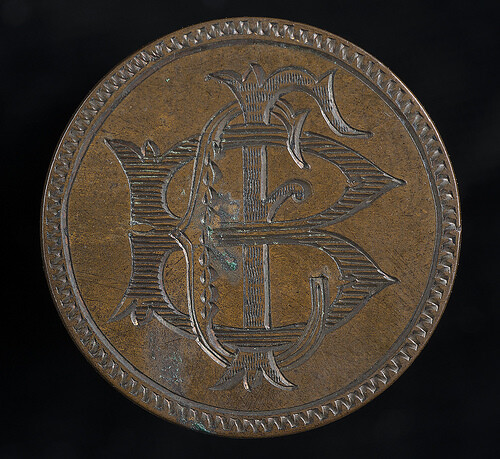
PREV ARTICLE
FULL ISSUE
PREV FULL ISSUE
FEATURED WEB PAGE: LOVE TOKENSThis Valentine's week, our Featured Web Page is a blog post on Love tokens by Robyn Einhorn, of the Smithsonian's National Numismatic Collection.
How does a numismatist (person who studies currency) say "Happy Valentine's Day"? With a love token, of course! Love tokens are coins that were engraved after the minting process was complete. Generally, an artisan removed the words and images from the reverse, or sometimes from both the obverse and the reverse of a coin. Artisans ranging in skills from a high-quality craftsperson to a "do-it-yourselfer" then engraved or punched pictures, initials, and messages on the cleared area. Other times, the coin was left intact and the artisan engraved initials, dates, or pictures on the edges around the images of liberty or royalty. The coins became lucky charms, objects of art, and pieces of jewelry. The messages on the coins could be used as spiritual reminders, family documentation, or sentimental sweet nothings. It is believed that the love token originated in Great Britain as early as the 13th century with the practice of bending coins. When dealing with your favorite saint, in return for a favor, a coin was bent and a pledge was made. The bent coin, "a token of your pledge," became a physical reminder of your obligation. Because love tokens are hand-engraved, they are unique. The birth of a baby, the initial of your intended, a soldier leaving a memory of himself with his loved ones, or a prisoner getting sent off to do his time; all have been remembered on the surface of a coin.

blog.americanhistory.si.edu/osaycanyousee/
|
